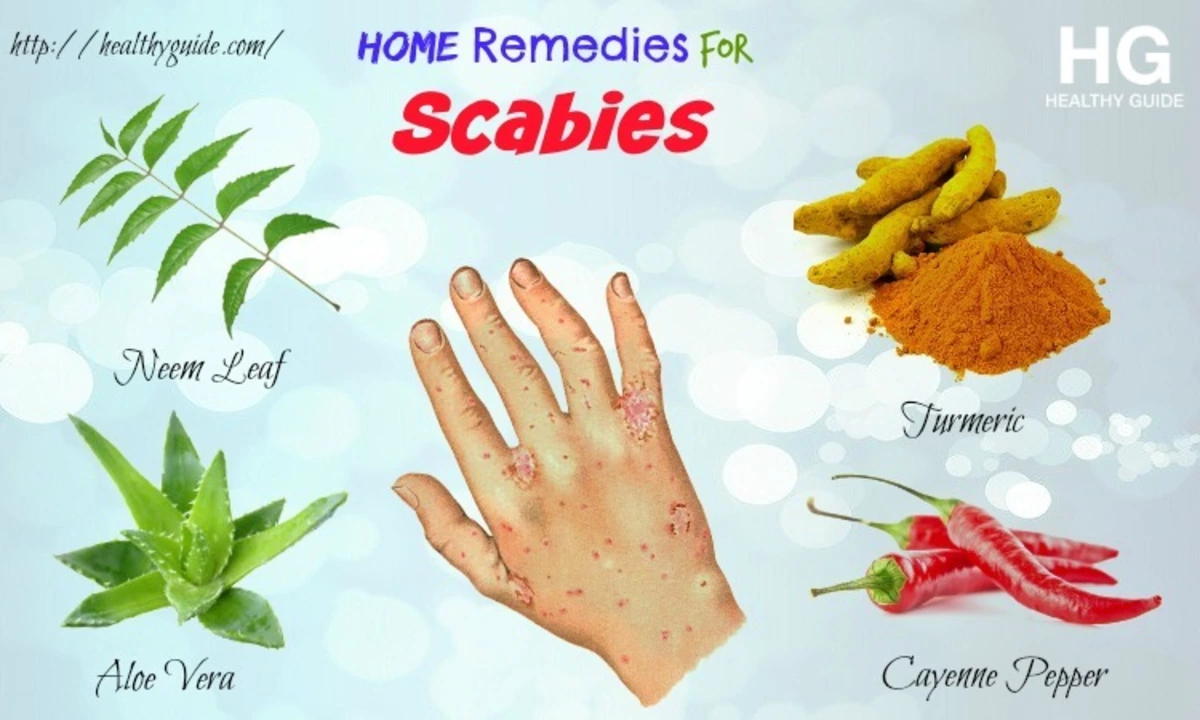Understanding Scabies and Its Symptoms
Scabies is a contagious skin infection caused by the microscopic mite Sarcoptes scabiei. These mites burrow into the skin and lay their eggs, triggering an allergic reaction in the body. Scabies is known for causing intense itching and a rash that often looks like small, raised red bumps or blisters. It's important to understand the symptoms of scabies so that you can take proper steps to prevent infection and seek treatment if necessary. Some common symptoms include:
- Severe itching, especially at night
- Rash with tiny blisters or sores
- Scratch marks or skin sores from scratching
- Burrow tracks on the skin, typically in folds or creases
Scabies can spread quickly through close physical contact, making it prevalent in crowded living conditions, such as nursing homes or dormitories. It's essential to take preventive measures to avoid infection and treat scabies promptly if you are infected.
Practicing Good Hygiene to Prevent Scabies
One of the most effective ways to prevent scabies is by practicing good hygiene. This includes regular hand washing, daily bathing, and changing clothes and bed linens frequently. Washing your hands frequently with soap and warm water can help remove any mites or eggs that may be present on your skin. It's also a good idea to keep your nails clean and trimmed, as mites can hide under the nails.
When bathing, use a mild soap to clean your body thoroughly. Pay special attention to areas where mites are more likely to burrow, such as skin folds and creases. After bathing, use a clean towel to dry off and put on fresh, clean clothes. Changing your bed linens regularly can also help prevent scabies, as mites can live on bedding for up to 72 hours.
Avoiding Close Contact with Infected Individuals
Scabies is highly contagious, so it's crucial to avoid close contact with anyone who has a confirmed or suspected scabies infection. This includes avoiding skin-to-skin contact, sharing personal items such as towels or bedding, and keeping a safe distance from infected individuals. If someone in your household has scabies, it's essential to take precautions to prevent the spread of the infection to other family members. This may involve:
- Washing all bedding, clothing, and towels in hot water and drying them on high heat
- Sealing non-washable items in a plastic bag for at least 72 hours to kill the mites
- Thoroughly vacuuming all carpets, rugs, and upholstered furniture
- Disinfecting surfaces that may have come into contact with the infected person
By following these steps, you can help minimize the risk of scabies spreading to others in your household.
Using Crotamiton for Scabies Treatment
If you suspect that you have scabies, it's important to see a healthcare professional for a diagnosis and appropriate treatment. Crotamiton is a medication that can be used to treat scabies, as it helps to kill the mites and relieve itching. Crotamiton is available as a cream or lotion and can be applied topically to the affected areas of the skin. To use crotamiton effectively, follow these steps:
- Take a shower or bath to cleanse your skin and remove any dirt or oils.
- Dry your skin thoroughly with a clean towel.
- Apply crotamiton to the affected areas of your skin, as directed by your healthcare provider. Be sure to cover all skin surfaces, including between your fingers and toes, under your nails, and in skin folds or creases.
- Leave the crotamiton on your skin for 24 hours, then take another shower or bath to wash it off.
- Repeat the application process for 2-5 days, or as directed by your healthcare provider.
During treatment, it's essential to continue practicing good hygiene and taking steps to prevent the spread of scabies to others.
Managing Itchiness and Discomfort during Scabies Treatment
While treating scabies with crotamiton, you may still experience itchiness and discomfort. Here are some tips to help manage these symptoms:
- Resist the urge to scratch, as this can worsen your symptoms and increase the risk of infection.
- Use over-the-counter antihistamines, such as diphenhydramine (Benadryl), to help reduce itching and inflammation.
- Apply cool, wet compresses to affected areas to soothe the skin and reduce inflammation.
- Wear loose-fitting, breathable clothing to avoid further irritation to your skin.
Remember to consult your healthcare provider if your symptoms persist or worsen during treatment, as they may need to adjust your treatment plan or prescribe additional medications.
Preventing Scabies Reinfection and Future Outbreaks
After successful treatment with crotamiton, it's essential to take steps to prevent reinfection and future scabies outbreaks. This includes continuing to practice good hygiene, regularly washing clothes and bedding, and avoiding close contact with individuals who have scabies. Additionally, be aware of any signs or symptoms of scabies, such as itching, rash, or burrow tracks on the skin, and seek prompt medical attention if you suspect a new infection.
By following these tips and taking preventive measures, you can help protect yourself and your loved ones from scabies infections and maintain healthy, itch-free skin.


Jim Allen
May 13, 2023 AT 11:25krishna raut
May 13, 2023 AT 19:19Prakash pawar
May 14, 2023 AT 14:01Emily Kidd
May 14, 2023 AT 22:07Justin Cheah
May 16, 2023 AT 18:06caiden gilbert
May 17, 2023 AT 18:55Nate Girard
May 19, 2023 AT 10:54MOLLY SURNO
May 20, 2023 AT 23:35Alex Hundert
May 21, 2023 AT 00:57phenter mine
May 22, 2023 AT 06:26Carolyn Kiger
May 24, 2023 AT 03:29